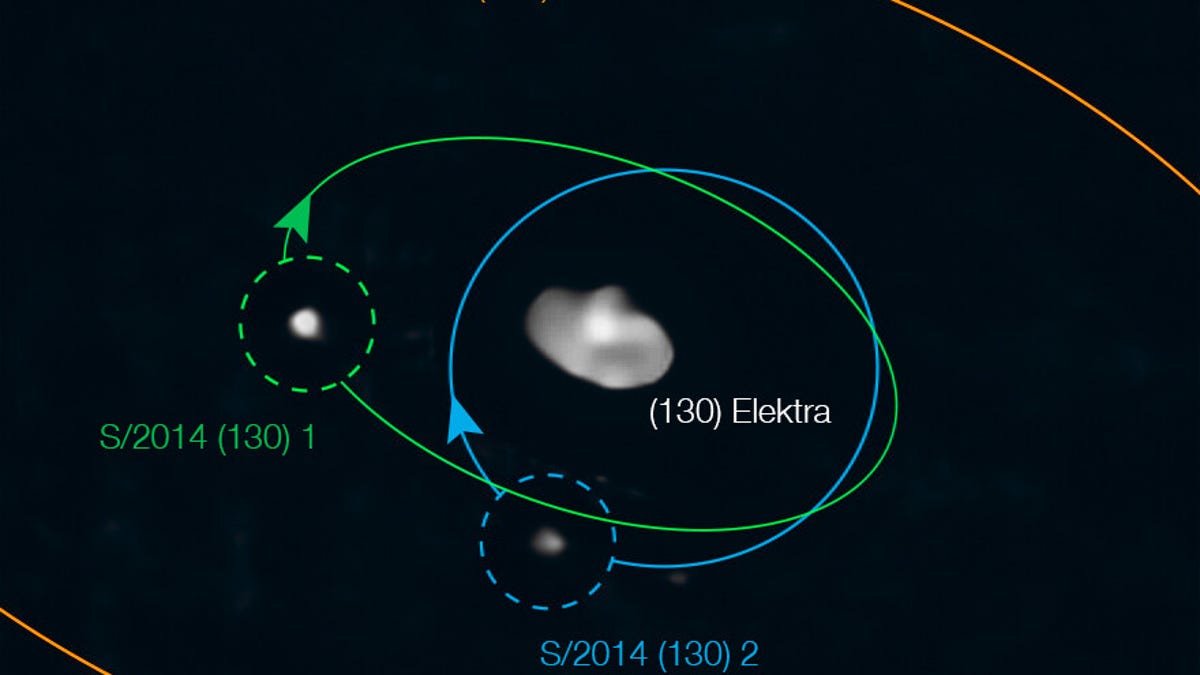Scientist Spots First Known Quadruple Asteroid System
It's the Fab Four of asteroids.
Some asteroids travel through space with moons for company, like the double-asteroid system NASA is targeting with its DART mission. For the first time, a researcher has discovered an asteroid with not one and not two, but three moons.
Asteroid (130) Elektra was already known to have two moons in residence, but the third was hiding out in data collected by the European Southern Observatory's Very Large Telescope in Chile. Anthony Berdeu of the National Astronomical Research Institute of Thailand developed a new data-processing algorithm and used it to take a fresh look at observations of Elektra from 2014.
Berdeu's work confirmed the two previously known moons and allowed the fainter third moon to pop out, no longer hidden by the main asteroid's brightness. Berdeu is lead author of a study published in the journal Astronomy & Astrophysics last week with the triumphant title "First observation of a quadruple asteroid."
Elektra is located in the solar system's main asteroid belt between Mars and Jupiter, and its unusual nature has attracted some scientific attention. The little moon orbits its parent every 16.3 hours. "The discovery will help astronomers understand how these satellites form and, in turn, provides crucial information about planetary formation and evolution of our own solar system," the European Southern Observatory said in a statement on Monday.
The Elektra asteroid system might be the first of its kind to be discovered, but there are probably more out there. Berdeu's data analysis method can be applied to other suspects and could kick off a treasure hunt for other quadruples hiding out in archival telescope data.


